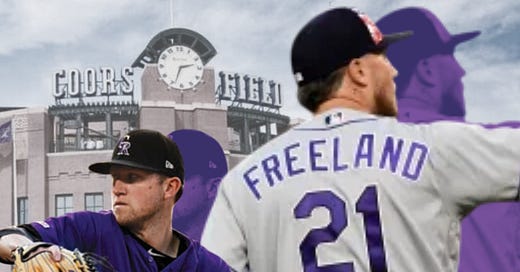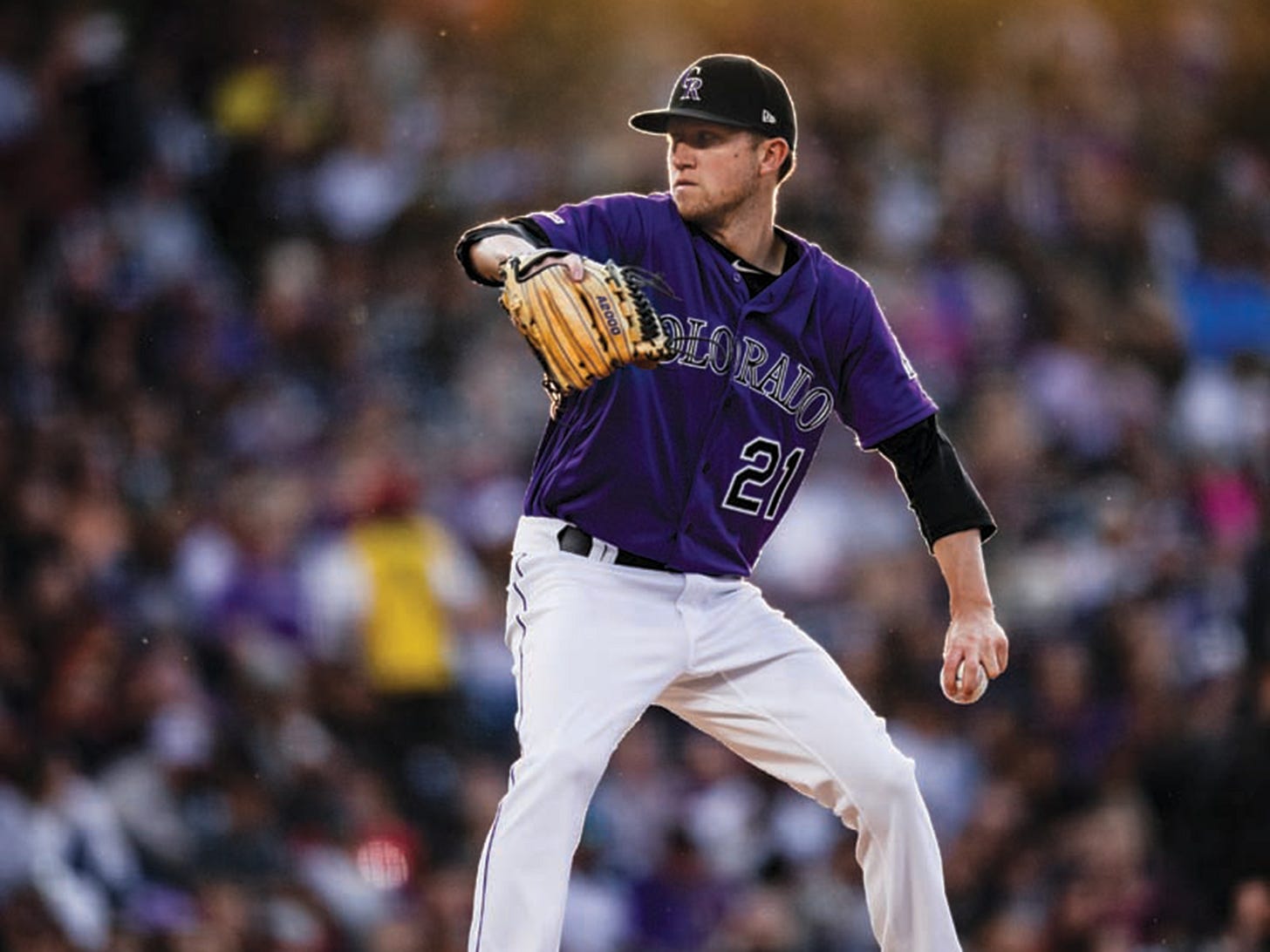Kyle Freeland took the mound for the Colorado Rockies at Chase Field to begin the 2024 season. Although expectations and general optimism were minimal, Freeland’s showing effectively ended the season before it even started.
2.1 innings pitched, 10 hits, 10 earned runs. The Arizona Diamondbacks slaughtered the Rox 16-1 for a colossal 0-1 dawn. He started 20 more games that summer, finishing his eighth season with a 5.24 earned run average (ERA), giving up 134 hits and a dire 1.41 walks plus hits per inning (WHIP).
Turning the page to 2025, the Rockies starting pitching rotation entered the season with the most potential in years. It’s highlighted by two established arms returning from injury: Germán Márquez and Antonio Senzatela. A young pitcher who’s entering his third year as a starter in Ryan Feltner. Mixed with Freeland and an early-season call-up of Chase Dollander, who’s the Rockies greatest pitching prospect in team history by Baseball America.
Despite the fact that Colorado is entering 2025 with the deplorable goal of avoiding 100 losses for the third year in a row, this rotation led by Freeland has surprised many early on.
In 2018, at the age of 25, Freeland finished fourth in National League Cy Young voting. It remains his best season to date, as he was the workhorse for the Rockies tied-second deepest postseason run. He was dealing with a 2.85 ERA in over 200 innings, punching out 173 across his career-high 33 games started.
The five years that followed saw his ERA even out to 5. He began to lose control of his fastball and frequently posted below-league-average numbers, often allowing nine-to-ten hits a night. However, in 2025 Kyle Freeland is starting to look reminiscent of the Rockies old ace.
This season, he’s started three games, folding a 3.75 ERA with zero run support. While that number isn’t eye-popping, when you look deeper, you see how much improvements he’s made from a season ago.
Across those starts, Freeland pitched 19 innings with 15 strikeouts and zero walks. His command has improved, hitting the zone 6% more than his career average. He’s striking out nearly 20% of the batters he faced, while increasing his career chase percentage, where he makes a batter swing and miss off a pitch outside the zone by over 10%.
A lot of this is thanks to the sixth pitch he added over the offseason: a sweeper.
“I got a little nugget of information from a buddy of mine, right when camp was starting,” Freeland said to MLB Central. “I could kind of mess with the grip and mess with some spin orientation. We got in the pitching lab, started working on it and it’s been a pretty good dividend right now, getting a lot of swing and misses, a lot of strikeouts so it’s great.”
His new pitch trifle has flashed a 42.5% whiff rate against opponents thus far, also marking it as his punch-out pitch collecting eight victims.
Baseball Savant scores pitchers from 1 to 100 (50 being league average) based on different facets of their game. Freeland has an 87 fastball rank and an 81 breaking ball score that equates to an 81 pitching value overall. A poor rating of 16 for his off-speed pitches like his change up and curveball bring that final tally down.
Batters facing Freeland are simply struggling to make solid contact. He’s generating an above-average non-barrel and ground ball percentages, primarily thanks to his new accuracy. His cutter this year is fooling batters nearly 50% of the time.
Last season Freeland’s spin rate was well below league average, with a subpar knuckle curveball that broke 5.7 inches less than MLB’s left-handed pitchers. But instead of relying on movement or velocity, Freeland is attacking the zone and it’s paid off.
It could come down to tweaks in his fundamentals, such as raising his arm angle to 29° and shortening up his extension, which is difficult around his 6-foot-4 build. Essentially he’s releasing the ball much earlier than he used to, really dialing in and painting corners.
On Wednesday, April 2, Freeland faced true major league ace Zack Wheeler in a matchup against the dangerous Philadelphia Phillies lineup.
“There’s 30 teams, not everyone has a legit, true number one, but [Wheeler’s] one of those guys,” Manager Bud Black said following the face-off. “And Kyle matched him, Kyle pitched great, he really did. Good use of the fastball, secondary pitches were great.”
Pitching in Major League Baseball is a science. Thanks to the new Statcast era, all the games within the game show Freeland’s raw improvement over an offseason. In what will surely be a long 162 games for the Rockies, bright spots like Freeland’s performance show what the team could be capable of under the right circumstances.
If he keeps up his showing three starts in, the Rockies may have their ace back.
Freeland is set to make the next start of his young season in the series finale against the San Diego Padres, on Sunday, April 13. First pitch is 2:10 p.m. MT.





